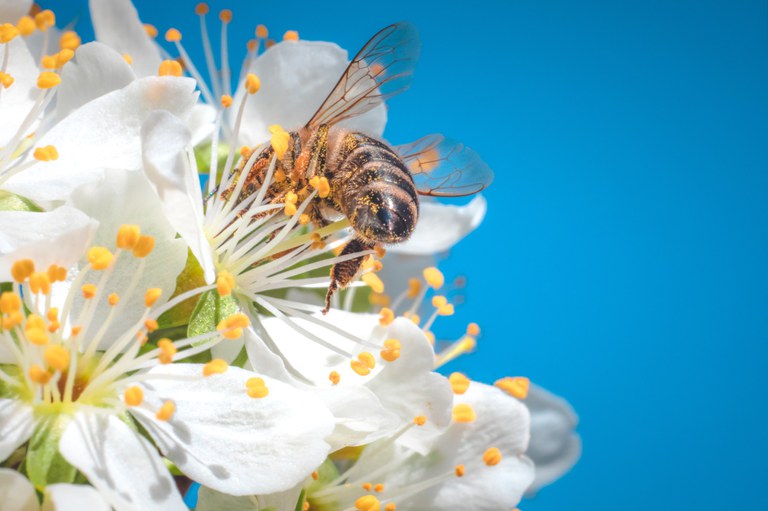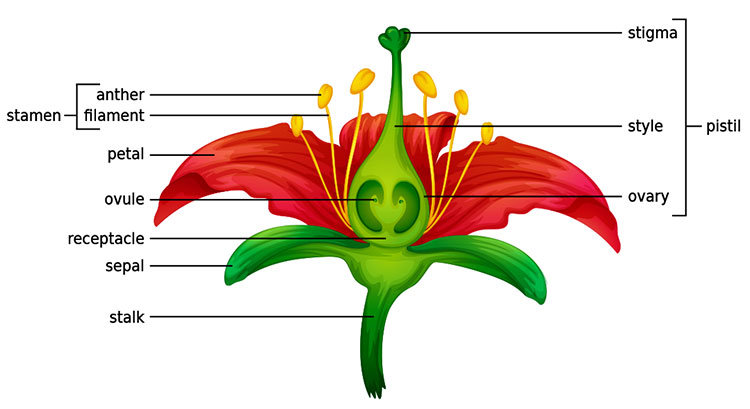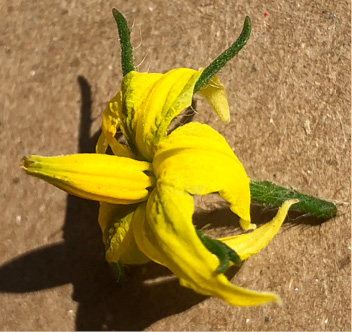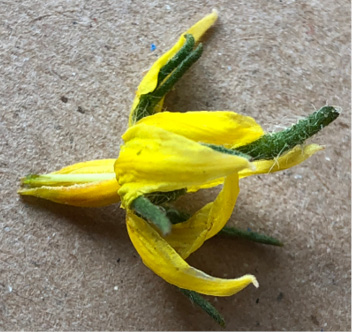Common plants in the cucurbit family include garden favorites such as cucumbers, squash, zucchini, pumpkins, watermelon and muskmelon. Most cucurbits depend on bee pollination because each plant produces separate male and female flowers rather than having both sets of reproductive parts in each flower.
Such flowers are called “imperfect.” Bees are essential to cross-pollinate, or carry pollen from the male flower to the receptive female flower.
The cucurbit male flower contains three to five stamens with pollen-producing anthers. The female flower produces a single style with three stigmas. The easiest way to distinguish between the two flower sexes is to look for an ovary below the yellow petals. Female flowers have a swollen ovary, or fruit, and male flowers do not (Figure 2).
Figure 2. Imperfect flowers. Cucumber female flower with its ovary (top) and male flower (bottom).
Gardeners frequently ask why they have so many flowers on their cucumbers but no fruit set. Look closely at the flowers to answer this question. In many cucumber cultivars, the first set of flowers are all male, which do not bear fruit. Male and female flowers then will be produced in the second wave of blooms.
If female flowers are present but no fruit develops, then the problem may be a lack of pollinators. In the short term, you can fill the role of the bee with hand-pollination.
Take a clean paintbrush and insert it into the male flower to gather pollen. Then transfer pollen to the stigmas of an open female flower. Hand-pollination works best in the morning. For a long-term solution, create pollinator habitat near or in the garden to attract bees.
In contrast to cucurbits, Soloanaceae crops such as tomatoes, peppers and eggplants produce “perfect” flowers that contain male and female reproductive structures. Flower anatomy differs from the idealized image in Figure 1.
Tomato anthers form a tube that completely surrounds the pistil (Figure 3a). In Figure 3b, the anthers are partially removed to reveal the pistil.
Figure 3a. Tomato flower with its anthers forming a tube around the pistil.
Figure 3b. Tomato flower with a portion of its anthers cut away to reveal the pistil.
Tomatoes, peppers and eggplants can be pollinated simply by wind shaking the pollen from the anthers onto the stigma. However, bumble bees can improve fruit set and size because they vibrate the flowers and shake pollen loose from the anthers.
Leafy greens (lettuce, spinach, arugula), cole crops (cabbage, broccoli, cauliflower, kale), root crops (carrots, beets, radishes, onions), legumes (peas, beans) and tuber crops (potatoes) do not require bees to produce an edible harvest.









